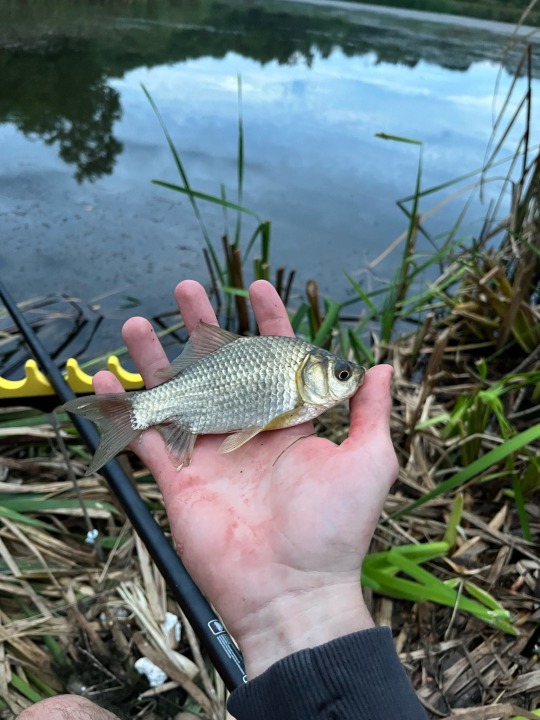#Cyprinidae
Text
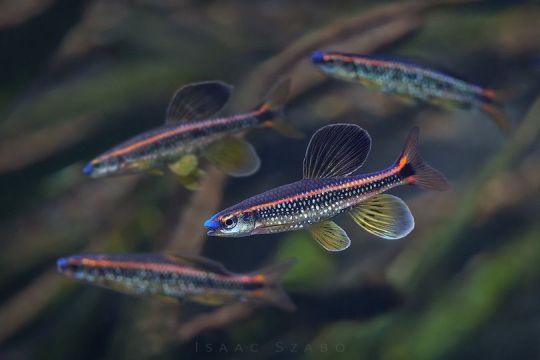
Bluenose Shiners (Pteronotropis welaka), males, family Cyprinidae, Cypriniformes, in a freshwater spring in Florida, USA
photograph by Isaac Szabo
#shiner#fish#cyprinidae#cypriniformes#pteronotropis#ichthyology#animals#nature#north america#bony fish
1K notes
·
View notes
Text

Aaptosyax grypus - No. 2
Known as the giant salmon carp, these fish live in the Mekong River that runs along Asia.
86 notes
·
View notes
Text
Critter fact #72:
Cyprinidae is the largest family of fish, with around 1,270 extant species and 3,000 total species. This family contains carps, minnows, and their relatives.
50 notes
·
View notes
Text
Uncharismatic Fact of the Day
Even hippos need an occasional spa day-- that’s what barbel fish are for! A member of the carp family, these fish feed parasites, food bits, dead skin, and even dung from a hippo’s mouth and skin. The fish gets a tasty snack, and the hippo gets a deep clean: a win for everyone!

(Image: A school of Niger barb ( Labeobarbus bynni ) give a hippo a thorough cleaning by Bill Bailey)
If you like what I do, consider leaving a tip or buying me a ko-fi!
120 notes
·
View notes
Text
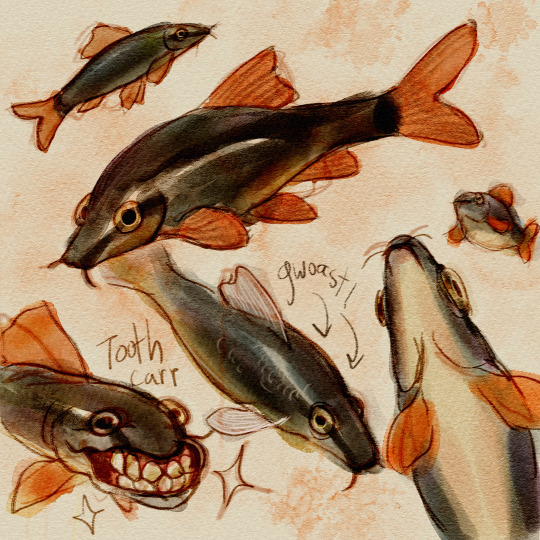
TOOTH CARP!
Rainbow sharks are the most fish-shaped fish I've ever seen. I mistook them for barbs, because I thought barbs was just short for barbels, aka the fish whiskers!
#tooth carps#rainbow sharks#aquarium fish#fish friends#epalzeorhynchos frenatum#ruby shark#cyprinidae#carp
128 notes
·
View notes
Photo

Let this little fishy go on adventure with you! Add them to your key ring and off you two go!
( Strixes’ Sabre )
#goldfish#fish#fish friend#taiyaki#keychain#charm#resin#fishes#street food#red bean#smol#Cyprinidae#aquarium#Japanese food#japanese snack#fishy
5 notes
·
View notes
Text
Rasbora Maculatus (Rasbora Enana)
Rasbora Macultus (Boraras maculatus), cuidados y características 🐟
#EnTuAcuario #RasboraMaculatus #RasboraEnano #BorarasMaculatus #PezTropical #Acuariofilia #Pecera #Acuario
El Rasbora Macultus (Boraras maculatus) o también llamado Rasbora Enana, es un pez perteneciente a la familia de los Ciprínidos.
Se trata de una especie que habita en el sudeste Asiático, más concretamente los territorios desde Sumatra asta Malasia.
Te puede interesar:
Tetra test agua acuarios6 en 1
VER PRECIO
Tetra acondicionador AquaSafe
VER PRECIO
Tetra Bomba aire APS 300
VER…

View On WordPress
0 notes
Video
See? I still shoot animals! by Sam Martin
Via Flickr:
Took some shots of my fishtank today; the minnows (family Cyprinidae) inside are mostly Southern Redbelly Dace and Shiners (Phoxinus erythrogaster and Notropis sp, respectively). These are the two listed, in order from top to bottom. I've also got a couple species of Darters (Etheostoma spectabile and sp.) a large Banded Sculpin (Cottus carolinae) and three Slender Madtom catfish (Notorus exilis) who are usually only active when it's dark. I'll have more animal photos as spring advances. Nikkor 60 macro, SB-400 on tripod and cable above tank.
#Southern#Redbelly#Dace#Shiners#(Phoxinus#erythrogaster#Notropis#fish#aquarium#minnow#cyprinidae#flickr
0 notes
Text
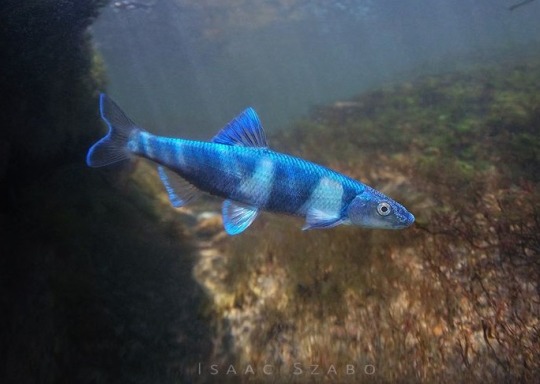
Spotfin Chub (Cyprinella monacha), male, family Cyprinidae, order Cypriniformes, in a stream in eastern TN, USA
photograph by Isaac Szabo
679 notes
·
View notes
Text
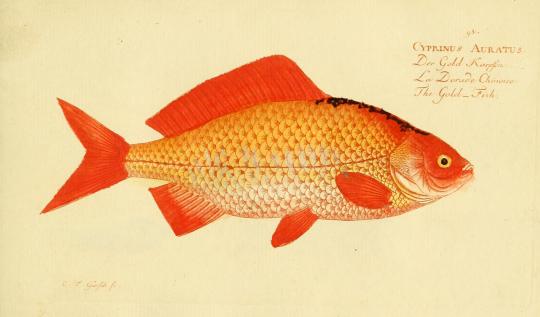

Goldfish from Marcus Elesier Bloch’s Ichthyologie ou, Histoire naturelle des poissons. Berlin 1796.
Source: Harvard University, Museum of Comparative Zoology, Ernst Mayr Library (online via Biodiversity Heritage Library: https://www.biodiversitylibrary.org/item/26748).
#goldfish in art#cyprinidae in art#fish in art#animals in art#Bloch#18th century#Ernst Mayr Library#biodiversity heritage library
342 notes
·
View notes
Text
A serene view of koi swimming by….
#videos#Phylum: Chordata#Class: Actinopterygii#Order: Cypriniformes#Family: Cyprinidae#Genus: Cyprinus#Cyprinus carpio#koi fish#Cyprinus carpio koi#koi#fish
1 note
·
View note
Photo

The world’s largest cave fish from Meghalaya, Northeast India, is a new species, Neolissochilus pnar (Cyprinidae, Torinae)
Abstract
The world’s largest subterranean fish was discovered in 2019, and was tentatively identified as a troglomorphic form of the golden mahseer, Tor putitora.
Detailed analyses of its morphometric and meristic data, and results from molecular analyses now reveal that it is a new species of the genus Neolissochilus, the sister taxon of Tor.
We formally describe the new species as Neolissochilus pnar, honouring the tribal communities of East Jaintia hills in Meghalaya, Northeast India, from where it was discovered. Neolissochilus pnar possesses a number of characters unique among species of Neolissochilus, with the exception of the similarly subterranean N. subterraneus from Thailand...
Read the paper here:
https://vertebrate-zoology.arphahub.com/article/101011/
1K notes
·
View notes
Text
Uncharismatic Fact of the Day
Minnows are most commonly known for their small size, but there are some that defy the stereotype. The Colorado pikeminnow is one of the largest minnow species in the world; once this species grew to nearly 2 m (6 ft) long and weighed up to 45 kg (100 lbs). Unfortunately, habitat degradation and overfishing have reduced the size of these fish, but they still easily outclass their smaller cousins.

(Image: A colorado pikeminnow (Ptychocheilus lucius) being examined by a biologist, by the Utah Division of Wildlife Resources)
If you like what I do, consider leaving a tip or buying me a ko-fi!
#colorado pikeminnow#Cypriniformes#Cyprinidae#pikeminnows#western chubs#minnows#carp#ray-finned fish#bony fish#fish#uncharismatic facts
116 notes
·
View notes
Text
Wet Beast Wednesday: invasive carp
I've mentioned on a few posts that in a previous job I helped remove invasive carp from the Mississippi river and drainage. For this Wet Beast Wednesday I'll discuss the three species that I personally helped remove: the silver carp, bighead carp, and grass carp. The common carp (Cyprinus carpio) and block carp (Mylopharyngodon piceus) are also invasive in North America, but I didn't remove either of those: the black carp because they haven't made it as far north as the area I worked and the common carp because the state governments where we worked considered them commercially important species. All the invasive species collectively described in America as invasive carp or Asian carp are large fish from the family Cyprinidae who are native to east Asia. They have been introduced to areas far beyond their native range for use in aquaculture and for food. Carp aquaculture in China goes back over a thousand years and the three species plus the black carp are known as the "four domesticated fish" for their importance in food and traditional medicine. The carp were introduced to America to clean aquacultural and decorative ponds and quickly escaped into the river system. They are now highly invasive throughout the Mississippi river basin and have also spread into other river systems, including the Illinois and Ohio rivers. All the introduced carp species are considered highly invasive due to outcompeting native species, lacing predators as adults, and their hardiness allowing them to thrive in harsh conditions.

This picture isn't informative at all, I just thought it was funny (image: a close-up of the head of a silver carp, showing its eye and large, open mouth)
Silver carp (Hypophthalmichthys molitrix) made up the majority of the carp I caught. In their native range (from Vietnam to eastern Siberia), silver carp are actually considered threatened due to overfishing and habitat loss. Outside of their native range, they have become highly invasive in multiple parts of the world. Silver carp notable for their large head and silvery scales, which become brighter in healthier fish. They reach an average of 60-100 cm (24-39 in) and 9 kg (20 lbs), but can reach a maximum size of 140 cm (55 in/4.6 ft) and 50 kg (110 lbs). They are filter-feeders, primarily dining on phytoplankton but also eating zooplankton and organic particles. To catch food, they use specialized gill rakers that have fused together into a spongy surface and is coated with mucus that traps particles. As with all Cyprinids, silver carp lack stomachs, instead having their intestines attaching directly to the esophagus. Lacking a stomach makes the fish less efficient in their digestion and they feed near constantly. Silver carp were introduced to America to clean blue-green algae from ponds, aquaculture facilities, and water treatment plants. They consume so much plankton that they can outcompete local species, such as freshwater mussels, paddlefish, buffalo, and shad, as well as larval fish of most species.

(image: a silver carp being held by a person (offscreen). The fish is seen from the side. It is a large fish with a silver color. Its head is relatively large and has no scales. The eye is unusually low on the head)
Silver carp migrate upriver to broadcast spawn, with their eggs and larvae being washed downstream where they grow in shallow waters like floodplains. Silver carp trapped in places without flowing water will not spawn, instead reabsorbing their gametes. Males have rough skin on the front of their pectoral fins, which they will scrape against the bellies of female to induce them to release their eggs. Females that have spawned at least once often have scars on their bellies that can be used to identify that they have reproduced. Silver carp reach sexual maturity between ages 4 to 6 and can live up to 20 years.

I believe I can fly! (image: a silver carp in profile midway through a jump out of the water)
Silver carp are famous for leaping out of the water when startled. They can reach up to 3 m (10 ft) out of the water, though larger individuals are less likely to jump. The sound of boat engines can easily spook the carp into jumping and there are many videos out there of boats moving through rivers surrounded with dozens to hundreds of jumping carp. The jumping behavior combined with the sheer size of the fish makes them a hazard to boaters, as colliding with a carp can damage boats and cause serious injury. Interestingly, carp in their native range are much less likely to jump than those in North America. The reason for this in unknown though it could be because carp in America live in much higher population densities than those at home. It is also possible that the carp first introduced to America happened to have a trait making them more likely to jump and this trait has been passed down to most modern carp.

(image: a small boat with three people on it. In the foreground, dozens of silver carp are jumping out of the water, causing the water to become frothy)

(gif description: a man is sitting on a running boat. A silver carp jumps in from the right side of the frame and hits him in the face, knocking his baseball cap off)
The bighead carp (Hypophthalmichthys nobilis) is closely related to the silver carp, enough so that they can hybridize to make fertile offspring. Bighead carp have darker scales and larger heads, but what really makes them stand out is their size. They reach an average of 60-100 cm (2-3 ft) and 18 kg (40 lbs) but can reach a maximum of 160 cm (5.2 ft) and 50 kg (110 lbs). They fill a similar ecological nice to silver carp, both species being filter feeders with specialized gill rakers used to filter out plankton. Bighead carp prefer zooplankton in contrast to silver carp targeting phytoplankton. They are highly valuable in aquaculture as they grow quickly, allowing for a lot of meat to be developed relatively quickly. Like silver carp, they swim up river to spawn and reach sexual maturity between 2 and 3 years. They can live up to 16 years. Bighead carp will also jump, but are less likely to do so, especially once they mature, and are therefore less notorious than silver carp.

(image: two bighead carp underwater, one closer and to the bottom right and one farther away at the top left. They are very similar in appearance to the silver carp, but have larger heads and darker scales, making them look brown. The closer fish has its mouth open)
Grass carp (Ctenopharyngodon idella) were the species I caught the least. They can be distinguished from the other two with their long, skinny, and round bodies, larger sales, and green coloration. Unlike the other two, grass carp are herbivores with teeth that feed on aquatic vegetation, though they also consume detritus and invertebrates in smaller amounts. Grass carp can eat up to a few times their weight in food a day. Grass carp can destroy whole patches of aquatic vegetation, which removes food sources for other animal, removes refuges for fish and other animals to hide, and can drastically alter the trophic web of local areas. They live in still ponds or rivers with slow currents, but move into fast-flowing rivers and swim upstream to spawn. They can reach between 60 and 100 cm (23.5 - 39.5 in) on average, but can get up to 2 m (6.6 ft) and 45 kg (100 lbs). Grass carp were first introduced to America to act as weed control in ponds before escaping into the wild. It is still possible to import grass carp for weed control, which is astonishing to me since thats how we got into this mess in the first place. Grass carp are highly valuable in fisheries and are used as a food source throughout their native range. They are the most farmed fish by biomass, with over 5 million tonnes of grass carp produced in fisheries every year. The second most farmed fish is the silver carp.

(image: a grass carp underwater. Its body is slender and torpedo-shaped, with large, distinct, green scales. Its head is scaleless and its eye is level with its mouth. A second fish is peeking into frame at the bottom right)
One of the problems with controlling carp in America is the lack of a market for them. They are not commonly eaten in America despite being a major food source in China and other parts of east Asia. This is in part because of the association the phrase "Asian carp" has with the common carp, which was introduced to North America before the other species and is generally considered to have poor-quality meat. Because there is no market for invasive carp, fishermen do not bother removing them from the rivers and many do not bother taking the time to kill the ones they do catch. A few conservation efforts are attempting to make a market for the carp so that fishermen will take them. When I was at my last job, we gave the carp we caught to someone who used them for fertilizer and bait. A current effort by the Illinois Department of Natural Resources and the U.S. Environmental Protection Agency is to rebrand the carp as Copi (from copious) in an attempt to get around the stigma that carp tastes bad and get Americans to start eating them. Copi is currently being sold in or distributed to multiple states and DC. The project has already exceeded the expected amount of fish removed in weight for the first year. Other rebrand attempts include Silverfin, the perfect catche, and (my personal favorite) Kentucky tuna. This rebranding is part of a major push to try to keep the carp out of the Great Lakes, though grass carp have already gotten into Lake Erie. If you can't beat them, eat them.

Image: the copi logo. It is the word "copi" written in a dark blue, blocky, minimalistic font. The letter O is replaced by a simplistic drawing of a light blue fish, whose tail forms the curve in the letter C)
#wet beast wednesday#asian carp#carp#silver carp#bighead carp#grass carp#invasive carp#invasive species#fish#fishblr#fishposting#conservation#freshwater biology#freshwater fish#freshwater ecology#biology#zoology#ecology#animal facts
79 notes
·
View notes
Text
Pethia conchonius - Often referred to as the Rosy Barb was one of the first fish collected and maintained in aquaria for it’s beautiful colors, hardiness, and interesting behaviors. They are a member of the vastly diverse cyprinidae family that contains around 370 genera and numerous wonderful species. This particular fish has a wide range throughout subtropical Asia being found in areas such as India and Afghanistan.
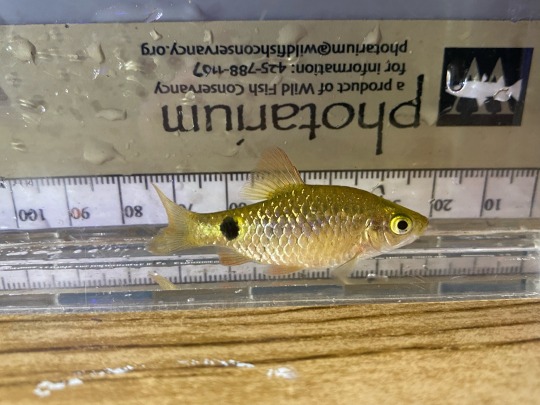
The fish pictured is a specimen I had kept believing it could possibly be of another, rarer species. Regardless I grew to become fond of what I once considered to be a mundane fish.
Multiple variations of this fish exist including specimens with xanthic colorations and darker reds.
Here is a video where you can watch a group of these fish I keep swimming around, one being of the xanthic variety: https://youtu.be/J_P0ihwjKPw?si=0F1A4XKPM9IrwfAd
youtube
Photo creds: me
55 notes
·
View notes
